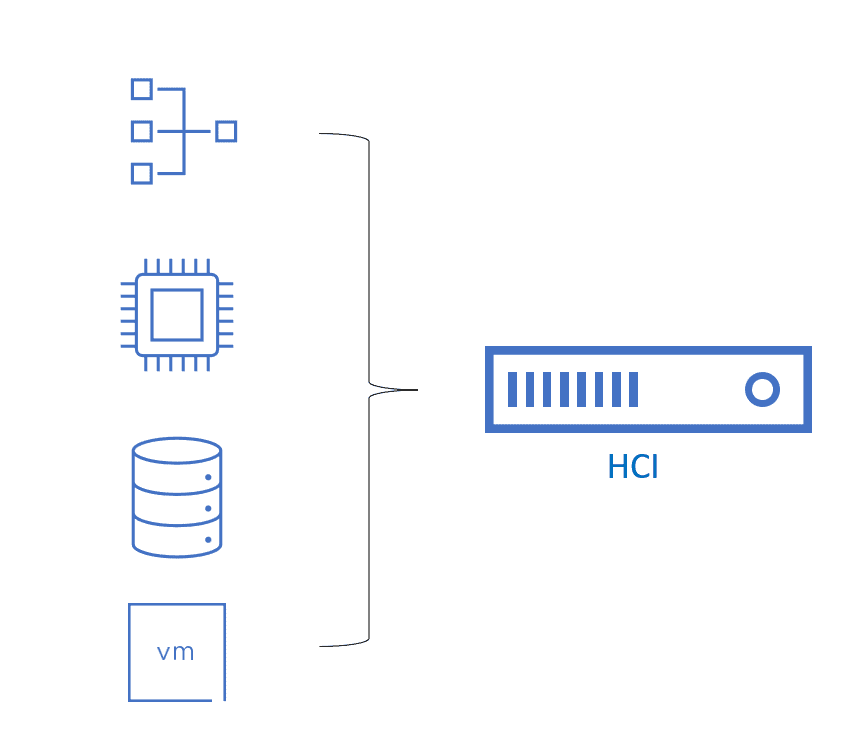Hyper-Converged Infrastructure(HCI)
Hyper-Converged Infrastructure (HCI) is a software-defined data center architecture that combines compute, storage, networking, and virtualization resources in a single, integrated system. With HCI, organizations can simplify their IT infrastructure, reduce complexity, and improve scalability and agility.
Why Hyper-converged Infrastructure?

Simplified management
HCI consolidates compute, storage, networking, and virtualization resources into a single, integrated system. This makes it easier to manage and maintain the infrastructure, reducing complexity and improving efficiency. With HCI, IT teams can manage the entire system through a single pane of glass, simplifying operations and reducing the risk of errors.
Improved scalability
HCI is designed to scale out, meaning that additional nodes can be added to the cluster as needed to meet growing demand. This allows organizations to easily expand their infrastructure without the need for complex reconfiguration or downtime. Additionally, HCI systems are highly modular, allowing organizations to add resources in small increments as needed.
Lower costs
By consolidating compute, storage, networking, and virtualization into a single system, HCI can reduce hardware, power, and cooling costs. Additionally, HCI systems are highly efficient, with resources allocated dynamically as needed to ensure optimal utilization
Improved performance
HCI systems are designed for high performance and low latency, with resources allocated dynamically as needed to ensure optimal performance. Additionally, HCI systems often include features such as flash storage and high-speed networking to further boost performance
Increased agility
With HCI, organizations can quickly provision new resources and spin up new applications, allowing them to respond more quickly to changing business needs. Additionally, HCI systems often include advanced automation and orchestration capabilities, further improving agility and reducing the time needed to deploy new services.
